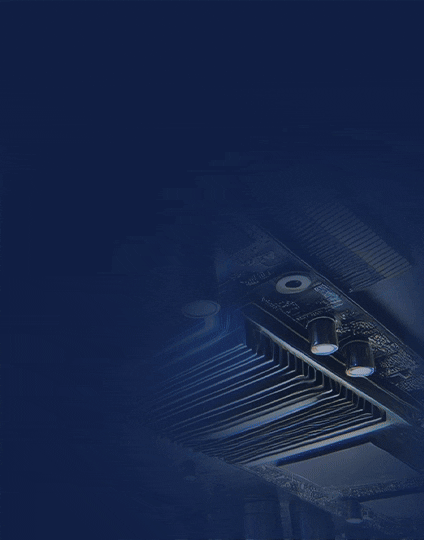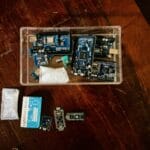In today’s rapidly advancing technological landscape, accurate and efficient test and measurement systems are crucial for ensuring the performance, reliability, and safety of complex electronic devices and systems. Whether it’s testing communication networks, automotive components, aerospace equipment, or industrial machinery, precise measurement is the backbone of quality assurance across industries.
One of the most promising technologies enhancing test and measurement capabilities is the Field-Programmable Gate Array (FPGA). FPGAs are becoming indispensable tools in many test environments due to their reconfigurability, parallel processing abilities, and high-speed performance. Unlike traditional processors or dedicated hardware, FPGAs offer unmatched flexibility and adaptability, making them ideal for handling the ever-growing complexity of modern testing requirements.
This blog will explore the role of FPGAs in test and measurement, highlighting their applications, benefits, challenges, and future trends. With their ability to provide real-time data processing and tailored solutions, FPGAs are revolutionizing how we approach testing in high-performance systems.

Why FPGAs are Ideal for Test and Measurement Applications
FPGAs have become a go-to solution for test and measurement applications due to several compelling characteristics that set them apart from traditional processors and other hardware. These features make FPGAs particularly well-suited for the complex and high-demand environments where precision, speed, and flexibility are critical. Let’s dive into why FPGAs are ideal for these applications:
1. High-Speed Data Processing
- Real-time Performance: FPGAs can handle data processing at high speeds with minimal latency, making them perfect for real-time applications. This capability is essential for test and measurement systems that require continuous, rapid analysis of test signals and data, such as in high-speed data acquisition or signal generation.
- Parallel Processing: Unlike traditional processors, which typically handle tasks sequentially, FPGAs process multiple tasks simultaneously through parallel execution. This feature allows test systems to process several measurement signals or inputs in parallel, significantly improving the efficiency and throughput of test procedures.
2. Parallel Processing Capability
- Simultaneous Measurements: In many testing scenarios, such as signal generation, data acquisition, and analysis, parallel processing is crucial. FPGAs excel at this by enabling multiple operations to occur concurrently. This not only speeds up test cycles but also allows for more complex analyses without sacrificing performance.
- Customized Processing Pipelines: FPGAs enable the creation of highly optimized processing pipelines tailored to specific test requirements. This flexibility allows for more accurate and sophisticated measurements, especially when dealing with large volumes of data or complex signal types.
3. Customization and Flexibility
- Reconfigurable Design: FPGAs are reprogrammable, which means their functionality can be customized based on the specific needs of the test and measurement application. Engineers can update the logic on an FPGA to accommodate different testing protocols, standards, and technologies without needing to replace hardware. This flexibility is essential in dynamic environments where testing requirements change frequently.
- Adaptability to New Standards: With the rapid evolution of communication technologies such as 5G, IoT, and AI, testing systems must continuously adapt to new standards and protocols. FPGAs allow test systems to evolve quickly and efficiently by reconfiguring the hardware to meet new testing demands.
4. Low Latency
- Immediate Data Processing: FPGAs are known for their ability to process data with extremely low latency. This is particularly important in test and measurement systems where every millisecond counts. For example, in high-speed signal testing, any delay can lead to inaccuracies, making real-time data processing a must.
- Faster Feedback and Results: In automated test environments, quick feedback loops are essential for optimizing the design and troubleshooting processes. The low latency of FPGAs allows engineers to receive results almost instantly, enabling faster decision-making and reducing time-to-market for new products.
5. Cost-Effectiveness
- Reduction in Hardware Costs: Traditional test and measurement systems often require a combination of multiple specialized instruments, which can be expensive. FPGAs can replace several pieces of test equipment by integrating multiple functions into a single, programmable device. This consolidation leads to lower hardware costs and a more compact test system design.
- Elimination of Fixed Hardware: Since FPGAs can be reprogrammed for different tasks, they reduce the need for dedicated hardware for each testing application, providing a more cost-effective solution in the long run.
6. Precision and Accuracy
- Highly Accurate Measurements: FPGAs enable precise control and measurement of electrical signals, ensuring that test results are highly accurate. Their ability to handle high-frequency signals and implement complex mathematical operations directly on hardware means that tests can be conducted with exceptional precision.
- Low Error Margins: By implementing custom algorithms directly in the FPGA’s hardware, the likelihood of measurement errors due to software-based processing or computational delays is minimized. This is crucial for industries such as aerospace, automotive, and telecommunications, where even minor inaccuracies can have serious consequences.

Applications of FPGA in Test and Measurement
FPGAs are revolutionizing the test and measurement industry by providing versatile, high-performance solutions for various complex applications. Their reconfigurability, high-speed processing, and parallelism make them suitable for a wide range of testing scenarios. Here are some key applications of FPGAs in test and measurement:

1. Signal Generation and Analysis
- Waveform Generation: FPGAs can generate highly accurate and complex waveforms required for testing electronic devices. They can produce signals at different frequencies, amplitudes, and modulation schemes, essential for testing communication devices, power electronics, and RF systems.
- Signal Analysis: FPGAs can simultaneously process and analyze signals in real-time, enabling precise analysis of signal characteristics such as frequency, phase, and amplitude. This capability is crucial for testing and validating the performance of systems like oscillators, mixers, and amplifiers.
2. High-Speed Data Acquisition
- Real-Time Data Collection: FPGAs excel at high-speed data acquisition in applications that require fast sampling rates, such as RF testing, optical measurements, and industrial equipment testing. They can interface with high-speed ADCs (analog-to-digital converters) and directly process the incoming data, reducing the need for additional processing stages and improving the system’s overall speed and efficiency.
- Precision Measurement: FPGAs can handle very high-precision measurements, capturing even the smallest signal variations with minimal error. This makes them ideal for testing systems where accuracy is critical, such as in scientific research or aerospace applications.
3. Digital Signal Processing (DSP)
- Signal Filtering and Conditioning: FPGAs can implement complex DSP algorithms like filtering, fast Fourier transforms (FFT), and signal conditioning directly on the hardware. This capability is useful in environments where signal integrity and noise reduction are essential, such as in communications systems, medical devices, and automotive electronics.
- Real-Time Signal Processing: With their parallel processing capability, FPGAs can perform real-time signal processing without significant delays, making them suitable for applications that require immediate feedback, such as radar or sonar signal analysis.
4. Automated Testing Systems
- Test Automation for Complex Systems: FPGAs enable the automation of test systems by controlling multiple devices simultaneously and processing test signals in real-time. This is particularly useful in environments where repetitive and high-volume testing is needed, such as in semiconductor manufacturing or production line testing for consumer electronics.
- Adaptable Test Environments: FPGAs can be reprogrammed to accommodate changing test protocols or new product specifications, making them adaptable for automated testing across various industries. They can be configured to control test equipment, trigger specific test sequences, and record results automatically.
5. Embedded Systems Testing
- Real-Time Performance Testing: In embedded systems, especially in industries like automotive and telecommunications, FPGAs are used to test the real-time performance of hardware and software interactions. FPGAs can simulate input signals, monitor system outputs, and validate the functionality of embedded systems without requiring external processing units.
- System Validation: FPGAs are used to perform system validation for embedded devices, ensuring that they meet the required standards for signal integrity, performance, and power consumption before being deployed in real-world environments.
6. Protocol Testing
- Testing Communication Protocols: FPGAs are ideal for testing complex communication protocols like Ethernet, PCIe, USB, and CAN. Their ability to handle high-speed data streams allows them to simulate and test communication links for packet loss, timing issues, and other performance-related concerns.
- Interfacing with Multiple Standards: FPGAs can be programmed to support different communication protocols and standards, making them versatile tools for testing devices that need to operate across multiple technologies. This ability is particularly valuable in telecommunications and networking applications, where multiple protocol layers are involved.
7. Power Electronics Testing
- Power Conversion Systems: FPGAs are increasingly used in testing power electronics, such as inverters, converters, and power supply units. They can generate waveforms to simulate power sources and analyze how the device under test (DUT) behaves under varying load conditions and frequencies.
- Efficiency and Stability Monitoring: By implementing real-time monitoring and control systems, FPGAs can assess the efficiency, stability, and power output of devices, which is essential for industries like renewable energy, automotive, and industrial automation.
8. Automotive Electronics Testing
- Sensor Testing: In the automotive industry, FPGAs play a significant role in testing sensors used in advanced driver-assistance systems (ADAS), such as LiDAR, radar, and cameras. FPGAs can process the signals from these sensors in real time, validating their performance in various environmental conditions.
- Embedded Control Systems: FPGAs are used to test embedded control systems in automotive ECUs (Electronic Control Units). They can simulate different driving conditions, monitor system responses, and validate the behavior of the control software running on the ECUs.
9. Wireless Communication Testing
- 5G and Beyond: FPGAs are widely used in testing next-generation wireless communication systems, including 5G. They can handle the high data rates and complex modulation schemes required for testing RF transmitters, receivers, and antennas.
- Signal Interference Analysis: FPGAs can simulate and analyze signal interference in wireless communication systems. They can generate and process signals with high precision, enabling engineers to identify potential interference issues and optimize system performance.
10. Aerospace and Defense Testing
- Radar and Sonar Systems: In aerospace and defense, FPGAs are used to test radar, sonar, and communication systems. Their ability to process high-frequency signals and implement complex algorithms makes them essential for testing military-grade electronics, ensuring they perform accurately in critical environments.
- Simulating Flight Conditions: FPGAs are used to simulate various flight conditions and test avionics systems, ensuring that they operate effectively in different operational scenarios.
Benefits of Using FPGA in Test and Measurement
FPGAs (Field-Programmable Gate Arrays) have become a cornerstone in the test and measurement industry due to their unmatched performance, flexibility, and versatility. As testing and measurement systems become more complex and demand higher precision and speed, FPGAs offer a range of benefits that make them an ideal choice for a variety of applications. Here are the key benefits of using FPGA in test and measurement:

1. High-Speed Processing
- Real-Time Data Handling: FPGAs are capable of processing large volumes of data in real time, making them essential for applications where high-speed data acquisition and analysis are critical. For instance, they can handle high-frequency signals and provide near-instant feedback, reducing latency and improving the overall performance of testing systems.
- Parallel Processing: Unlike traditional processors that work sequentially, FPGAs use parallel processing, allowing multiple tasks to be executed simultaneously. This is particularly valuable in scenarios where multiple test signals need to be analyzed at once, improving throughput and reducing test times.
2. Customization and Flexibility
- Reconfigurable Hardware: One of the most significant advantages of FPGAs is their reconfigurability. They can be programmed to meet the specific needs of various test and measurement applications. As testing standards or protocols evolve, FPGAs can be easily reprogrammed, offering a level of flexibility that traditional hardware solutions cannot match.
- Tailored Solutions: With FPGAs, engineers can design custom hardware solutions to optimize performance for specific testing needs. Whether it’s creating specialized signal generators or custom data processing pipelines, FPGAs offer unparalleled flexibility for implementing unique requirements.
3. Reduced Latency
- Immediate Feedback: FPGAs excel at low-latency processing, which is essential for time-sensitive applications such as real-time testing of communication systems, radar, and automotive sensors. The ability to instantly process and analyze incoming data means that results can be delivered faster, improving efficiency and decision-making.
- No Software Overhead: Unlike general-purpose processors that rely on operating systems and software to handle data, FPGAs execute tasks directly on the hardware, eliminating the delays associated with software-based processing.
4. Precision and Accuracy
- High-Resolution Measurements: FPGAs offer high precision when it comes to signal processing and measurements. They can handle fine-grained analysis of signals, making them ideal for applications that demand high accuracy, such as in scientific research, aerospace, and medical device testing.
- Direct Hardware Control: By executing test algorithms directly on the hardware, FPGAs eliminate errors introduced by software processing, ensuring more reliable and accurate measurements. This is particularly important in industries where even small errors can have significant consequences.
5. Cost-Effective Solution
- Hardware Consolidation: FPGAs can integrate multiple test and measurement functions into a single piece of hardware, reducing the need for multiple specialized instruments. This hardware consolidation not only saves on equipment costs but also reduces the complexity and size of testing systems.
- Lower Total Cost of Ownership: By replacing multiple pieces of hardware with a single FPGA-based solution that can be reconfigured as needed, businesses can reduce the overall cost of ownership. Additionally, FPGAs’ longevity and adaptability make them a long-term, cost-effective investment.
6. Real-Time Signal Processing
- Complex Signal Operations: FPGAs can perform complex signal processing tasks such as filtering, FFT (Fast Fourier Transform), modulation, and demodulation, directly on the hardware in real-time. This capability is crucial in applications like communications testing, power systems analysis, and sensor validation, where processing must be fast and accurate.
- Customizable Algorithms: Engineers can implement highly specific algorithms in FPGAs, enabling custom signal processing workflows that are tailored to the exact needs of the test being performed. This level of customization ensures that testing is optimized for the unique characteristics of the system under evaluation.
7. Scalability and Long-Term Relevance
- Adaptability to New Standards: As testing protocols and standards evolve, FPGAs can be reprogrammed to accommodate these changes. This scalability ensures that testing systems remain relevant and up-to-date without requiring significant hardware upgrades, offering significant cost savings over time.
- Multi-Use Functionality: FPGAs can serve multiple roles within a test and measurement system. For example, they can be used for signal generation, data acquisition, analysis, and control, all within the same unit. This multi-functional capability makes FPGAs highly scalable for a wide range of testing needs.
8. Parallel Testing Capabilities
- Simultaneous Multi-Channel Testing: FPGAs excel at parallel processing, enabling the testing of multiple signals simultaneously. In applications where testing numerous channels or devices at once is required, FPGAs significantly increase throughput. This capability is especially useful in high-volume testing scenarios, such as semiconductor testing, automotive sensor validation, and telecommunications equipment verification.
- Efficient Multi-Domain Testing: FPGAs can be configured to test various types of signals (digital, analog, RF) in parallel, providing a holistic view of a system’s performance across multiple domains without the need for separate equipment for each domain.
9. Power Efficiency
- Low Power Consumption: FPGAs are often more power-efficient than traditional processors when performing complex tasks, making them ideal for portable test and measurement systems. This efficiency is especially valuable in battery-powered or field-based applications, such as environmental monitoring, aerospace, and automotive testing.
- Optimized Resource Utilization: FPGAs allow for the precise allocation of resources, ensuring that only the necessary components are powered during operation. This leads to optimized energy usage, reducing the overall power consumption of the system.
10. Integration with Existing Systems
- Seamless Integration: FPGAs can easily integrate with existing test and measurement equipment, such as oscilloscopes, analyzers, and signal generators, through standard interfaces like PCIe, Ethernet, and USB. This ease of integration makes them a flexible addition to any test setup without requiring significant modifications to the existing infrastructure.
- Support for Legacy Systems: FPGAs can be configured to support older test protocols, providing a bridge between new technologies and legacy systems. This compatibility ensures that businesses can continue using their existing equipment while still benefiting from the advanced capabilities of FPGA-based systems.
Conclusion
FPGAs have proven to be an invaluable asset in the field of test and measurement, offering a unique combination of speed, flexibility, precision, and cost-effectiveness. Their ability to handle high-speed data processing, perform real-time signal analysis, and be easily reconfigured makes them an ideal choice for modern testing applications. Whether it’s for high-performance testing in aerospace, automotive, communications, or scientific research, FPGAs provide the capability to meet the increasingly complex demands of these industries.
The benefits of FPGA integration, including reduced latency, enhanced accuracy, and scalability, enable businesses to stay ahead of technological advancements and evolving industry standards. As the need for faster, more efficient, and customized testing solutions grows, the role of FPGAs in test and measurement will continue to expand, providing versatile, long-term solutions that enhance the overall efficiency and reliability of testing systems.
In conclusion, FPGAs are shaping the future of test and measurement, offering a powerful, adaptable, and efficient toolset for engineers and organizations seeking to optimize their testing processes. By leveraging the unique advantages of FPGAs, companies can ensure the success and accuracy of their test systems, driving innovation and progress across multiple industries.












